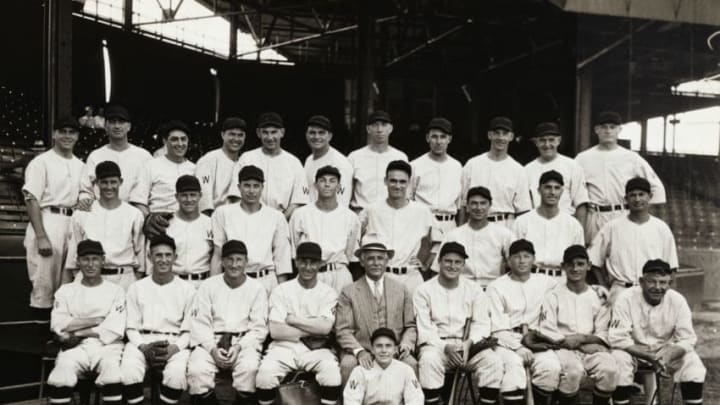
The year was 1933, and the Senators delivered euphoria…until they ran into Carl Hubbell and Mel Ott. Here’s the story of the last World Series experience for the Washington Nationals.
There hasn’t been a World Series game played in the city of Washington in 86 years. The last player to wear a Washington Nationals (then, the Senators) uniform in a Series game died a quarter-century ago.
A 10-year-old among the 28,454 in attendance at Griffith Stadium for that Oct. 7, 1933 game would be 96 today.
So it’s no surprise that Nationals fans are eagerly looking forward to the return of World Series baseball to the nation’s capital next week. Aside from Seattle, which has never hosted a World Series, no big-league city has waited longer to watch a World Series.
That 1933 Senators team featured four future Hall of Famers, but few names that would be recognizable to less than hard-core fans today. Still, in an era dominated by the Ruthian Yankees, the Senators won 99 regular-season games and somehow managed to unseat the defending champion Bronx Bombers by seven games.
Unfortunately, the Senators lost that World Series in five games to the New York Giants, absorbing a pair of defeats in Washington including the concluding fifth game by a 4-3 score in 10 innings on a controversial home run.
Those Senators were managed by 26-year-old shortstop Joe Cronin, a five-year veteran appointed by club owner Clark Griffith following the 1932 season. Player-managers were not uncommon in that era – Charley Grimm had both played and managed the Chicago Cubs to the 1932 National League pennant, as would Frankie Frisch with the St. Louis Cardinals in 1934.
In fact, Cronin’s managerial opponent in the 1933 World Series, New York’s Bill Terry, was also the Giants’ star first baseman.
What was unusual was Cronin’s familial connection to his boss. Three years earlier he had married Mildred Robertson, Griffith’s niece. That bond made Cronin a particular favorite of Griffith, although not a big enough favorite that Griffith would say no when the Boston Red Sox offered to buy Cronin for $225,000 prior to the 1935 season.
In 1933 Cronin was his own best player. He batted .309, drove in a team-high 118 runs and was the starting American League shortstop in the inaugural All-Star game that summer. At season’s end, he would finish second to Jimmie Foxx in voting for the league’s Most Valuable Player award.
